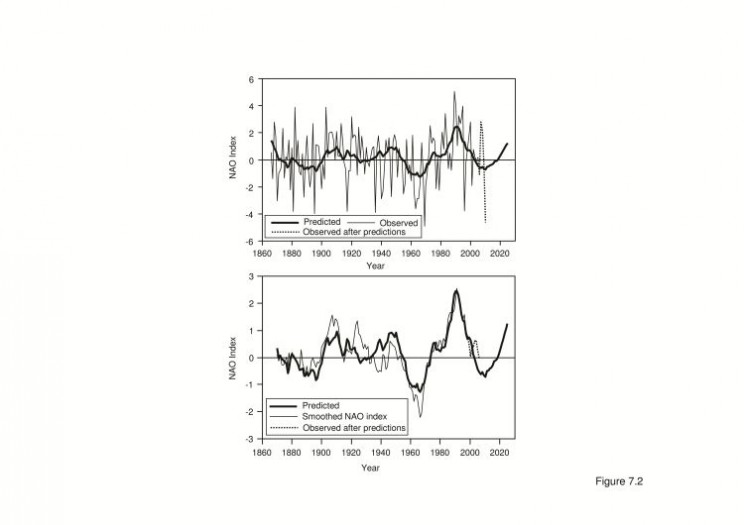By Arnold H. Taylor
At the time of writing, the British Isles and much of Europe are experiencing their second cold winter with record low temperatures. Roads are blocked by snow, trains are disrupted and airports closed. Meanwhile, conditions over the other side of the Atlantic Ocean are unusually mild. The reason for this is that the North Atlantic Oscillation (NAO), a great swaying of the weather patterns over the region, is currently in a weak phase.
This climatic swaying is one of the long, slow dances into which the Earth’s atmosphere and oceans are locked, and which catch up living populations in their wake. The largest of these, the El Nino-Southern Oscillation (ENSO), distorts weather patterns all around the equatorial regions of the planet. In each case, atmospheric pressure rises (or falls) in one area at the same time as it falls (or rises) in distant region. The atmospheric seesaw is east-west between Australia and Tahiti in the ENSO phenomenon but north-south between Iceland and the Azores in the NAO.
Another important difference between the two is that the NAO is basically a winter phenomenon rather than occurring throughout the seasons. Strong values of the NAO correspond to intense westerly winds with mild winters over Europe but cold winters in eastern Canada and the USA. With weak NAO’s there are less pronounced westerlies and the temperatures are reversed.
But the ENSO and the NAO also have something in common: at the root of each is a melodic ballet of ocean and atmosphere. For the NAO this has been demonstrated by Mark Rodwell, Dan Rowell and Chris Folland at the UK meteorological Office who showed that the variations in the NAO over the last 50 years could be reproduced by a model of the atmospheric circulation, provided that the observed temperatures of the world’s oceans were included. They went on to infer that heat exchanges in and out of the North Atlantic Ocean were a critical process for this. However, when Martin Hoerling, Talyi Xuby and Jim Hurrell in Boulder, Colorado used another model to see which aspects of the oceans’ temperatures were most vital for reproducing the NAO changes, they found it was the progressive warming of the tropical regions.
Can these two alternative causes of the NAO, heat exchanges in the North Atlantic and tropical warming, be reconciled? One possible scenario is a resonator in the ocean and atmosphere of the North Atlantic that is driven by remote events in the tropics. A resonator is any object or system having a natural frequency. Perhaps the most familiar example is a playground swing. Pushing a child in time with its period will make the swing go higher and higher, but attempts to push it at a faster or slower tempo result in smaller movements. In the resonator model, the variations in the tropics constitute the external forcing and the conditions in the Atlantic the state of the resonator.
In 2005, I published a simple model of this kind in Geophysical Research Letters. This model used observations of global temperatures and of the ENSO cycle to make its predictions (see figure above). The paper included a forecast of the trend in the NAO up to 2025, a forecast that predicted the likelihood of weak NAOs around the present time. Last winter and the current one seem to be bearing



